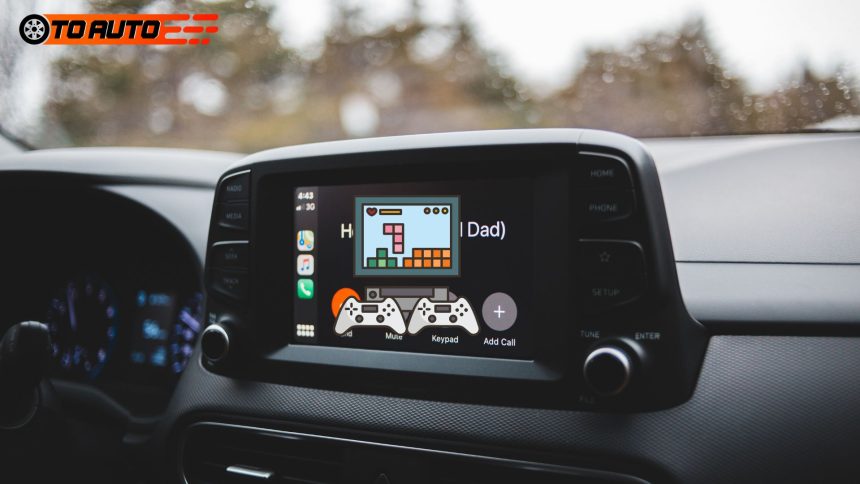The entertainment system history in vehicles is a fascinating story of technological evolution. From the early days of simple radios to today’s sophisticated infotainment systems, car entertainment has seen remarkable changes. As drivers have evolved, so have their expectations for in-car entertainment. Understanding how far we’ve come allows us to appreciate the modern technology that keeps us entertained on the road. In this article, we’ll explore the development of car entertainment systems, highlighting the key milestones in entertainment system history that shaped today’s driving experience.
The Early Days: Radios Revolutionize Car Rides
The journey of in-car entertainment began with the introduction of radios in the 1930s. Before this, car rides were often a quiet affair, interrupted only by the sound of the engine and road noise. The birth of the car radio marked a turning point in entertainment system history, allowing drivers and passengers to enjoy music, news, and other broadcasts during their trips.
In 1930, Motorola introduced one of the first commercially successful car radios, the Motorola 5T71. This invention was a breakthrough, but it came at a cost—literally. Early car radios were expensive, costing nearly 20% of a car’s total price, making them a luxury item for the wealthy. Nonetheless, their popularity soared, and by the 1940s, car radios became more accessible, offering families a way to stay connected to the world while on the move.
The 1950s and 1960s saw further advancements in car radio technology. AM radios were the standard, but the development of FM radio brought improved sound quality and more diverse content. This period marked the true beginning of widespread in-car audio enjoyment, setting the stage for future innovations in entertainment system history.
Cassette Tapes and the Rise of Personal Music Choices
By the late 1960s and early 1970s, drivers were looking for more personalized control over what they listened to in their cars. This demand led to the development of 8-track tape players and, later, cassette players. These devices revolutionized entertainment system history by giving drivers the power to choose their music and listen to it on-demand.
The 8-track tape, introduced in the mid-1960s, allowed for continuous play of music without needing to change tapes frequently. However, it was the cassette player that truly changed the game. Cassette tapes were smaller, more portable, and offered better sound quality. They became the dominant in-car music format by the 1970s and 1980s.
For the first time, drivers and passengers could create their own mixtapes, listen to albums in their entirety, and even rewind or fast forward to their favorite tracks. This control over personal music preferences marked a significant leap forward in entertainment system history, leading to the decline of radio’s dominance in cars.
The Compact Disc (CD) Revolution
In the 1980s, entertainment system history took another significant step forward with the introduction of the compact disc (CD). CDs offered superior sound quality over cassette tapes and were more durable, as they were not subject to the wear and tear that tapes often experienced. Car manufacturers quickly began incorporating CD players into their vehicles, and by the 1990s, CD players had replaced cassette decks as the standard audio format.
With the rise of CDs, music lovers were no longer confined to the limited quality of cassettes. They could now enjoy crystal-clear sound on the road, and CDs became the preferred method of listening to music for nearly two decades. However, the CD era also marked the beginning of a shift toward digital music, which would soon reshape entertainment system history once again.
The Digital Age: MP3 Players and Aux Inputs
The turn of the millennium brought with it the digital revolution. MP3 players, such as Apple’s iPod, forever altered the way people stored and listened to music. Drivers wanted to bring their digital libraries into their vehicles, which led to a new development in entertainment system history: the auxiliary input.
Auxiliary inputs allowed drivers to connect their MP3 players directly to their car’s audio system. This simple port gave them access to thousands of songs without the need for physical media like CDs or tapes. Drivers could now create playlists, shuffle tracks, and listen to an almost unlimited variety of music—all from one small device.
This digital shift was a massive leap in entertainment system history, as it began to move away from physical media entirely. As MP3 players and smartphones grew in popularity, so did the need for seamless integration with car audio systems, laying the foundation for the sophisticated infotainment systems we see today.
Read More: Elevate Your Drive: A Guide to Aftermarket Audio Upgrades in 2024
Bluetooth, Streaming, and the Modern Infotainment Era
In the late 2000s and 2010s, entertainment system history entered the era of Bluetooth connectivity and streaming services. Bluetooth technology allowed drivers to wirelessly connect their phones and other devices to their car’s audio system, eliminating the need for auxiliary cables. This innovation was not only convenient but also safer, as it helped reduce distractions from fumbling with wires while driving.
As streaming services like Spotify, Pandora, and Apple Music gained popularity, drivers began streaming music directly from the internet. This marked the next major evolution in entertainment system history, as car entertainment was no longer limited to what drivers owned or carried with them. Instead, they could access virtually any song, podcast, or audiobook on-demand, as long as they had an internet connection.
Today’s infotainment systems offer much more than just music. Modern systems integrate navigation, climate control, hands-free calling, and voice assistants like Siri or Alexa, all controlled from a central touchscreen. These systems are essentially the command centers of modern vehicles, providing a seamless and integrated experience for drivers and passengers alike.
The Future of Car Entertainment Systems
As entertainment system history continues to evolve, the future holds even more exciting possibilities. Autonomous vehicles, for example, could transform car entertainment by turning vehicles into mobile living rooms. Passengers in self-driving cars might enjoy full entertainment systems with movies, games, or virtual reality experiences, taking in-car entertainment to levels previously unimaginable.
Additionally, advancements in artificial intelligence (AI) and machine learning could create personalized entertainment experiences based on a driver’s preferences and habits. Infotainment systems of the future may be able to anticipate your entertainment needs, suggesting music, podcasts, or audiobooks based on your mood, location, or time of day.
With the integration of 5G technology, faster data speeds will enable even more advanced streaming capabilities, allowing for ultra-high-definition video content and real-time gaming experiences on the go. The possibilities for car entertainment in the coming years are virtually limitless, with technology continuing to push the boundaries of what’s possible inside a vehicle.
The Enduring Importance of Car Entertainment
Throughout the entertainment system history, one thing has remained constant: the desire for distraction, enjoyment, and connection while on the road. From the first car radios to today’s cutting-edge infotainment systems, each development has enhanced the driving experience, making journeys more enjoyable and less monotonous.
In-car entertainment systems have not only made long road trips more bearable but have also provided essential tools for staying informed, connected, and engaged while driving. As we look forward to the future, the history of car entertainment reminds us of how much innovation can enhance the simple act of driving.











